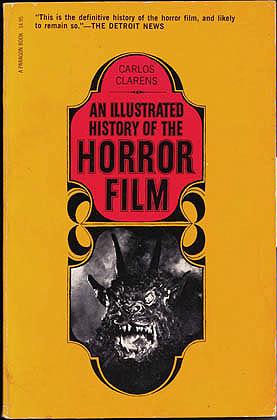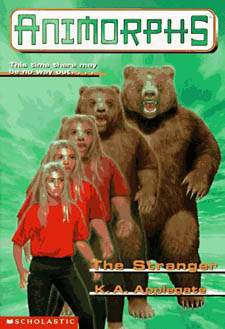Beginning a Halloween theme for the remainder of the month, today’s book is An Illustrated History of the Horror Film, by Carlos Clarens. Softcover 8th printing published 1979 by Paragon Books. Includes 48 pages of black-and-white photos, and the Cast and Credits of more than 300 horror films.

The author, well known to film buffs as an original and cogent critic, brings his encyclopedic knowledge of films and film makers to this outstanding history and analysis of the horror film. Whether discussing the erotic aspects of King Kong
, examining the works of Val Lewton, contrasting the director’s attitude toward the monster in Frankenstein
and The Bride of Frankenstein
, … or comparing the various versions of Dr. Jekyll and Mr. Hyde
, Mr. Clarens entertains as he enlightens. His fascinating study of a popular genre explains both the genre and its popularity. — from back cover.

Dracula (75th Anniversary Edition) (Universal Legacy Series)
From Clarens’s discussion of Dracula:
If Dracula
, the film, has retained any power to impress after thirty-five years of repeated showings, it is due in the main to [Bela] Lugosi
himself. It is useless to debate whether he was a good actor or not: Lugosi was Dracula: the actor’s identification with the part is complete. He may not conform to the [Bram] Stoker
description (as does John Carradine
, for example), but he left an indelible mark on the role and, consequently, on the horror film as well. Where [Lon] Chaney
remained human and pathetic, Lugosi appeared totally evil. As Count Dracula, he neither asked for nor needed the audience’s sympathy. Even Lugosi’s nonvillain roles he imbued with malevolence, as in The Black Cat
and The Invisible Ray
. To other roles — mad scientist, necromancer, monster, or mere red herring — he brought a kind of corn-ball, demented poetry and total conviction. At the height of his popularity, he received as many letters as any romantic screen idol, 97 per cent of which, he announced to the press in 1935, came from women. Quite effective too was Lugosi’s mellifluous, Hungarian-accented voice, which helped create a barrier of unfamiliarity (and something too ambiguous to be charm) that was as effective in its way as Chaney’s doleful silence before the Sound Era. There is a world of difference between Christopher Lee
‘s hoary, modern-English introduction of himself (in the British remake) and Lugosi’s ominous, remote “I am — Dracula.” Lee may indeed be the better actor but Lugosi pretty permanently claims the part. The movies do not often bring about such happy matches. — from The Illustrated History of the Horror Film, by Carlos Clarens (p. 62)
* * *
Also currently in stock at BrainiacBooks.com:
The Independent Film and Video Monthly, May 1998 [cover shows image from Martha Coburn’s film Evil of Dracula]

* * *
If you are interested in more particulars about the Book of the Day or any of our other featured books, search our store at BrainiacBooks.com for the title. If the book is still in our stock, you’ll be taken to the page for that title.




